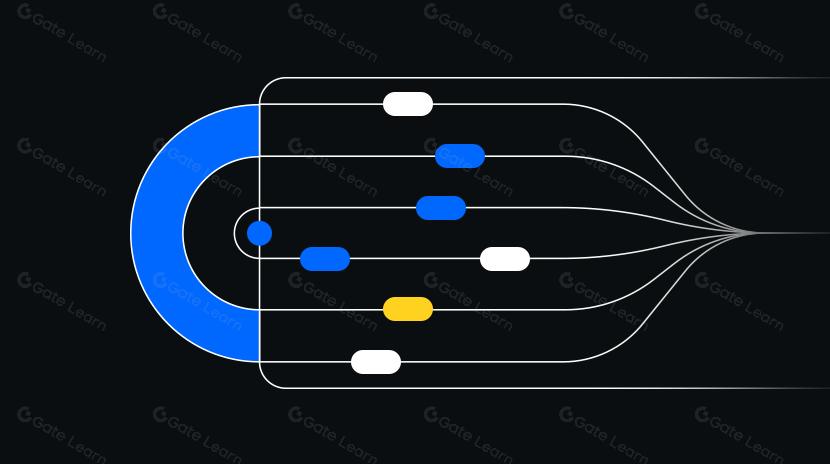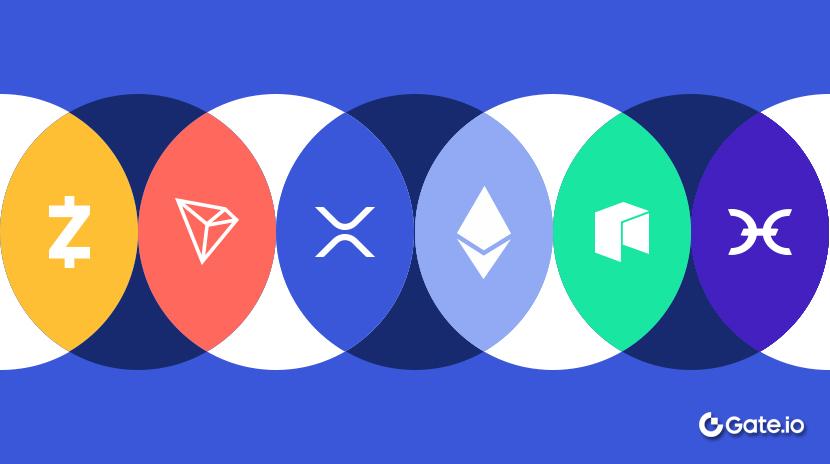Gate Research: x402 ecosystem token market cap surpasses $840 million | IBM launches digital asset management platform
Crypto Market Overview
BTC (-0.54% | Current Price: 114,292 USDT): Bitcoin traded within the $113,792–$116,388 range over the past 24 hours, with slightly higher volume compared to the previous two days. On the 4-hour chart, the price failed to break above $115,500 and pulled back, causing the golden cross signal to disappear and briefly dipping below the MA5 and MA10 lines. On the daily chart, the overall trend remains bullish, but the $115,000–$116,000 zone forms the first key resistance, testing whether the uptrend can continue. A decisive close above this range could lead to a retest of the $120,000–$122,000 liquidity zone and potentially challenge the $126,000 all-time high. Conversely, if the breakout fails, a pullback toward the $108,000 accumulation support area may occur, which remains a high-liquidity buy zone and the basis for recent rebounds. On the news front, the Fed has shifted focus to the labor market, with signs of easing inflation, and the market widely expects one rate cut this week and another in December. Before these cuts materialize, Bitcoin may continue to consolidate, but a confirmed breakout could trigger a new directional move.
ETH (-1.71% | Current Price: 4,127 USDT): Ethereum’s bullish momentum continues, attempting to reclaim key resistance. The price has rebounded above $4,100, oscillating between $4,094–$4,253 over the past 24 hours, with slightly higher volume than the previous two days. The 4-hour chart shows Ethereum was rejected at the $4,200 resistance, with RSI signaling overbought conditions. The price subsequently pulled back and fell below the MA5 and MA10 lines. In the short term, a further pullback or consolidation may occur, and investors should remain cautious.
Altcoins: With Bitcoin’s recent rebound, historical volatility has slightly eased from high levels, and the Fear & Greed Index has risen from last week’s 34 (“Extreme Fear”) to a neutral 50, indicating that market sentiment is stabilizing and short-term risk appetite is recovering.
Macro: On October 27, the S&P 500 rose 1.23% to 6,875.16, the Dow Jones gained 0.71% to 47,544.59, and the Nasdaq increased 1.86% to 23,637.46. As of 02:00 AM (UTC) on October 28, spot gold is trading at $4,005 per ounce, up 0.59% over the past 24 hours.
Trending Tokens
CLANKER (+14.72%, Market Cap: $119M)
According to Gate market data, CLANKER is currently priced at $122.67, up 14.72% in the past 24 hours, reaching a high of $129.02. Clanker is an AI-powered “Token Bot” designed for rapid DIY token deployment. Users simply tag Clanker on Farcaster clients like Warpcast or Supercast and provide their token concept, and it will automatically create the token on the Base chain. Recent factors driving CLANKER’s price include the platform’s cumulative protocol revenue of approximately $42.8M, with daily revenue around $698K, reflecting strong activity and user growth, providing solid support for the token’s value. Additionally, the team has launched a token buyback program using two-thirds of daily protocol fees to repurchase CLANKER (first buyback ~$65K), with the remaining funds held in USDC for tax purposes. This reduces circulating supply, attracts investor attention, boosts trading volume, and reinforces upward momentum.
RECALL (+11.21%, Market Cap: $95.27M)
RECALL is currently trading at $0.47, up 11.21% in 24 hours, with a high of $0.52. Recall is a decentralized AI skills marketplace where users can fund needed skills, outsource tasks to qualified AI agents, and rank and reward top-performing AI. This surge is mainly driven by three factors: first, the October 21 exchange listing spiked liquidity, with daily trading volume jumping 69% to $211M, significantly boosting retail demand; second, supply pressure eased after the TGE, as the October 15 token issuance and airdrops were gradually unlocked, avoiding concentrated sell-offs; third, the AI narrative and trading competitions fueled speculative interest, including a $100K reward pool in the AI Perps Trading Arena, stimulating short-term demand and staking. Overall, RECALL’s rise reflects exchange listing effects, controlled supply-demand rhythm, and AI concept resonance, though technically the 7-day RSI at 56.88 suggests potential short-term consolidation.
BLESS (+13.41%, Market Cap: $82.25M)
BLESS is trading at $0.047, up 13.41% in 24 hours, reaching a high of $0.054. Bless is a decentralized edge computing network providing on-demand CPU and GPU capabilities for AI, machine learning, and advanced data tools near end users. It aims to build a diversified blockchain ecosystem while offering trading, rewards, and governance functions. BLESS has maintained strong momentum, recently participating in the October 10–24 BNB Smart Chain trading competition with 11M BLESS tokens distributed as rewards, driving a 728% surge in trading volume. Current buy-side pressure remains strong, with 24-hour trading volume at $37.3M, 30.5% above average, indicating high market attention and activity. Short-term, however, investors should watch for potential sell pressure as winners claim their rewards.
Alpha Insights
x402 Ecosystem Tokens Surpass $840 Million Market Cap with 24-Hour Gain of 384.1%
x402 ecosystem tokens continue their strong upward trend, with the total market cap surpassing $840 million and a 24-hour increase of 384.1%. Specifically, BNKR’s market cap is approximately $58.97 million, up 4.3% in 24 hours, while PAYAI’s market cap is around $49.83 million, up 35.5%. x402 is an open protocol that builds internet-native micropayment channels based on HTTP 402 and stablecoins, enabling automated clients and AI agents to pay for APIs, data, and computation on demand. This allows real-time, low-friction, intermediary-free transactions. x402’s value goes beyond providing a “payment standard for AI agents”; using blockchain stablecoins enables previously difficult “micropayments,” where AI agents pay for services in real time based on usage, and human users can access content directly without API key management or account registration. The recent surge in x402 token prices suggests speculative activity, yet unlike other hype-driven concepts, tech giants such as Cloudflare, Google Cloud, and Anthropic are actively adopting x402, and infrastructure development is progressing rapidly.
IBM Launches Digital Asset Platform IBM Digital Asset Haven
On October 27, 2025, IBM announced the launch of IBM Digital Asset Haven, a comprehensive platform for financial institutions, governments, and enterprises to securely manage and scale digital asset operations. The platform covers the full lifecycle from asset custody and trading to settlement, ensuring sovereignty, security, and compliance. Developed in collaboration with digital wallet infrastructure provider Dfns, it integrates IBM’s full-stack infrastructure and security with Dfns’s asset custody and management capabilities. It supports transaction lifecycle management across 40+ public and private blockchains, including automation, routing, monitoring, and settlement. Governance and permissions are managed through a unified framework supporting multi-party authorization workflows, suitable for diverse operational scenarios. Third-party integrations include KYC, AML, and yield-generation solutions. For security, the platform leverages multi-party computation (MPC), hardware security modules (HSM), and IBM’s Offline Signing Orchestrator (OSO) for secure cold storage operations, meeting global regulatory requirements. The launch marks IBM’s further expansion into the digital asset space, providing a secure, compliant platform for institutions entering and scaling in the digital asset economy.
ZEC Market Cap Nears $6 Billion, Hits All-Time High
Zcash (ZEC) has reached a market cap of nearly $6 billion, setting a new all-time high. ZEC’s core value lies in its strong privacy features, which have attracted significant capital amid rising demand for Web3 privacy and on-chain transaction anonymity. Its price surged over 500% in less than a month, rising from around $275 to $367. The rally is fueled by a highly aligned market narrative and capital inflow: in early October, investor Naval described ZEC as “insurance for Bitcoin,” promoting the “digital gold insurance” narrative and triggering investor FOMO. Combined with the upcoming halving in November 2025 (reducing daily issuance from 3,600 to 1,800 ZEC) and the launch of the Grayscale Zcash Trust, expectations for supply-side tightening and investment convenience further supported the price increase. In a context of tightening global regulation, assets with strong privacy features carry strategic value. ZEC leverages zk-SNARKs to provide privacy assurances, giving the price surge a fundamental backing beyond mere speculation. Arthur Hayes’s $10,000 price target further reinforces market focus on the potential of privacy assets.
References
- Gate, https://www.gate.com/trade/BTC_USDT
- Farside Investors, https://farside.co.uk/btc/
- Gate, https://www.gate.com/trade/ETH_USDT
- Investing, https://www.investing.com/currencies/xau-usd
- CoinGecko, https://www.coingecko.com/en/categories/x402-ecosystem
- PRN ewswire, prnewswire.com/news-releases/ibm-announces-new-platform-for-financial-institutions-and-regulated-enterprises-entering-the-digital-asset-economy-302594751.html
- Decrypt, https://decrypt.co/346032/zcash-2021-peak-traders-bet-privacy-revival
Gate Research is a comprehensive blockchain and cryptocurrency research platform that provides deep content for readers, including technical analysis, market insights, industry research, trend forecasting, and macroeconomic policy analysis.
Disclaimer
Investing in cryptocurrency markets involves high risk. Users are advised to conduct their own research and fully understand the nature of the assets and products before making any investment decisions. Gate is not responsible for any losses or damages arising from such decisions.
Related Articles

Exploring 8 Major DEX Aggregators: Engines Driving Efficiency and Liquidity in the Crypto Market

What Is Copy Trading And How To Use It?

What Is Technical Analysis?

How to Do Your Own Research (DYOR)?

What Is Fundamental Analysis?
